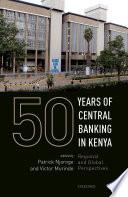Hope Behind Bars: Notes from Indian Prisons Sanjoy Hazarika (Editor)
https://ebookmass.com/product/hope-behind-bars-notes-from-indianprisons-sanjoy-hazarika-editor/
ebookmass.com
Fundamentals of Body MRI 2nd Edition Christopher G. Roth
https://ebookmass.com/product/fundamentals-of-body-mri-2nd-editionchristopher-g-roth/
ebookmass.com
50 Years of Central Banking in Kenya Patrick Njoroge
https://ebookmass.com/product/50-years-of-central-banking-in-kenyapatrick-njoroge/
ebookmass.com
Bunka Fashion Series Garment Design Textbook 1Fundamentals of Garment Design Bunka Publishing Bureau
https://ebookmass.com/product/bunka-fashion-series-garment-designtextbook-1-fundamentals-of-garment-design-bunka-publishing-bureau/
ebookmass.com
Liquid-Gas and Solid-Gas Separators 1st Edition Jean-Paul Duroudier
https://ebookmass.com/product/liquid-gas-and-solid-gas-separators-1stedition-jean-paul-duroudier/
ebookmass.com
Acknowledgments
Iwouldliketothankmyparentsfortheirongoingsupportandbeliefinme nomatterwhat.IalsohavetothankMikeforalwaysbelievinginmenomatterwhathappensandenduringmydesiretobewithpeopletobetterthe world.
IwouldliketodedicatethisbooktotheOmahaTribeofNebraska,which hastaughtmethetruemeaningofcommunityworkandwhatitmeansto becomepartofacommunity.IalsodedicatethisbooktoJohnPenn,who taughtmesomuchaboutgrantwritingandletmebeapartofhisteam.
ReviewerRecognition
JosephCipriani,EdD,OTR/L Professor,DepartmentofOccupationalTherapy MisericordiaUniversity Dallas,Pennsylvania
SandraBarkerDunbar,DPA,OTR/L,FAOTA Professor,OccupationalTherapyDepartment HealthProfessionsDivision,CollegeofAlliedHealthandNursing NovaSoutheasternUniversity FortLauderdale–Davie,Florida
SueCoppola,MS,OTR/L,BCG,FAOTA
AssociateProfessor,DivisionofOccupationalScience UniversityofNorthCarolina ChapelHill,NorthCarolina
CristyDaniel,MS,OTR/L CollegeofSaintMary Omaha,Nebraska
DeniseDonica,DHS,OTR/L AssistantProfessor,OccupationalTherapyDepartment EastCarolinaUniversity Greenville,NorthCarolina
AnneM.Haskins,PhD,OTR/L OccupationalTherapyDepartment UniversityofNorthDakota GrandForks,NorthDakota
LianeHewitt,DrPH,OTR/L
AssociateProfessorChair,DepartmentofOccupationalTherapy LomaLindaUniversity LomaLinda,California
HeatherJavaherian,OTD,OTR/L LomaLindaUniversity LomaLinda,California
PamelaKasyan-Itzkowitz,MS,OTR/L,CHT OccupationalTherapyDepartment NovaSoutheasternUniversity FortLauderdale–Davie,Florida
JanePainter,EdD,OTR/L AssociateProfessor,Director,ClinicalEducation CollegeofAlliedHealthSciences,OccupationalTherapyDepartment EastCarolinaUniversity Greenville,NorthCarolina
AmyPaul-Ward,PhD,MSOT AssistantProfessor,DepartmentofOccupationalTherapy CollegeofNursingandHealthSciences FloridaInternationalUniversity Miami,Florida
GreshundriaM.Raines,OTD,MPA,OTR/L AssistantProfessorandAcademicFieldworkCoordinator DepartmentofOccupationalTherapy AlabamaStateUniversity Montgomery,Alabama
JaneeneSibla,OTD,MS,OTR/L UniversityofMary Bismarck,NorthDakota
StacySmallfield,DrOT,OTR/L UniversityofSouthDakota Vermillion,SouthDakota
TheresaSmith,PhD,OTR,CLVT TexasWoman’sUniversity Houston,Texas
LEARNINGOBJECTIVES
CommunityPracticein OccupationalTherapy: WhatIsIt?
Bytheendofthischapter,thereaderwillbeabletocompletethe following:
1.Describetheroleoftheoccupationaltherapypractitionerin communitypractice.
2.Compareandcontrasttheoreticalapproachestocommunitypractice inoccupationaltherapy.
3.Reflectontheskillsrequiredtoengageincommunitypracticeasan occupationaltherapypractitioner.
Overview
Thischapterprovidesabasicintroductiontocommunitypracticeasafoundationforprogramdevelopmentandgrantwritingforoccupationaltherapy practitioners.Thepremiseofthisbookisthatsuccessfulgrantproposalsare basedonsoundprogramdevelopment.Throughoutthisbook,manyofthe conceptsintroducedinthischapterarediscussedingreaterdetailincluding applicationandexamples.Inthischapter,modelsofcommunityoccupationaltherapypracticearedefinedanddescribedalongwithskillsandchallengesrelatedtocommunitypractice.Importantconceptsofcommunity
KeyTerms
•Community
•Community-based participatory research(CBPR)
•Community-based practice
•Community-built practice
•Communitycapacity building
•Communitycentered
•Community partnership
•Communitypractice
•Health
•Primaryhealth promotion
•Secondaryhealth promotion
•Tertiaryhealth promotion
practicearedescribedasaremethodsandstrategiesforbuildingevidenceincommunitypractice.
Introduction
Occupationsdonotoccurinavacuumand,asoutlinedintheOccupationalTherapyPracticeFramework(OTPF),occupationsareaffectedbythecontextinwhich peoplelive(AmericanOccupationalTherapyAssociation[AOTA],2008). Community isanimportantcontextthatinfluencespeoples’abilitytoengageinoccupations.Communitiescanfacilitateorinhibitoccupationalengagementofthose withandwithoutdisabilities.Inthisbook,theskillsofgrantwritingarethoroughly discussedasappliedtocommunityoccupationaltherapypractice.Occupational therapy communitypractice canbeinitiatedandsupportedbyexternalfunding, includinggrants(Brownson,1998).Priortodelvingintothetopicofgrantwriting, thequestionmustbeasked:Whatiscommunitypracticeforoccupationaltherapy practitioners?
WhatIsCommunity?
LET’SSTOPANDTHINK
Howdoyoudefinecommunity?
Whatcommunitiesdoyoubelong to?Takesometimetowritedown answerstothesequestionsand reflectonyourdefinitionandthe communitiesofimportancetoyou.
Communitiesprovideauniquesettingforoccupationaltherapypractice.“Everydaylifeofacommunity,itsmixofpeople,theirneeds,concerns,joysandstruggles,offersanunparalleledopportunitytodefine[theoccupationaltherapy] discipline,researchitspotential”(Fidler,2001,p.8).Communitiesareindividualstiedtogetherbyoccupationalengagementandacollective senseofmeaning.Communitiesarenotsimplydefinedby geographiclocationbutrefertoa“person’snaturalenvironment,thatis,wherethepersonworks,plays,andperforms otherdailyactivities”(Brownson,1998).Communitiesare thesettingswherepeoplereside,buildrelationships,and engageinhealthpractices(Brownson,1998;Scaffa,2001; Grady,1995).Communitiesexistasacontextinwhichpeopledefinetheirlives.Forsomepeople,identifyingmembershipinacommunitymaybechallenging,yeteveryone belongstomultiplecommunities.
Theimportanceandrelevanceofcommunitypracticeinoccupationaltherapy havebeendiscussedthroughouttheprofession’shistory(McColl,1998).Inoccupationaltherapy,anessentialconceptionofcommunityisonethatconsiders groupsofpeopleengagedinacollectiveoccupation.Inotherwords,justasindividualshaveuniqueoccupations,sodocommunities.Thebasisofacommunityis relationships,andcommunitiesofpeoplecometogether“todosomethingthat cannotbeeasilydoneinisolation”(Scaffa,2001,p.8).Basedonthispremise,communitieshaveuniquecultures,relationships,viewsofhealth,andoccupations.
HealthintheContextofCommunity
TheWorldHealthOrganizationdefines health as“astateofcompletephysical, mentalandsocialwell-beingandnotmerelytheabsenceofdiseaseorinfirmity” (WorldHealthOrganization[WHO],1998).Healthhasbeencomprehensively definedintheprofessionofoccupationaltherapyas
theabsenceofillness,butnotnecessarilydisability;abalanceofphysical, mental,andsocialwell-beingattainedthroughsociallyvaluedandindividuallymeaningfuloccupation;enhancementofcapacityandopportunityto striveforindividualpotential;communitycohesionandopportunity;social integration,support,andjustice,allwithinandaspartofasustainableecology.(Wilcock,2006,p.110)
Bothdefinitionsacknowledgethathealthisnotonlyaboutdiseasestate.These definitionsincorporateaholisticviewofwell-beingandtheimportanceofquality oflifeasasignificantcomponentofhealth.Incommunitypractice,occupational therapypractitionersmustretainabroadviewofhealthinordertoimplementsuccessfulhealth-relatedprogramsbecausetheextrinsicfactorsofhealthcannotbe denied.Forexample,whenconductinganoccupationaltherapyevaluationinthe home,thepractitionercanexploretheimpactthattheenvironmenthasonthe client’soccupationalengagementandeasilyvisualizethebarrierstotransfersor mobilitythattheclientmayfaceinthehome.
Inthecommunitycontextofoccupationaltherapypractice,thedefinitionof healthmovesawayfromthemedicaldefinition.Healthisviewedastheabilityto engageinoccupation(Baum&Law,1998;Wilcock,2006).Occupations“demonstrateacommunity’sandanindividual’sculturallysanctionedintellectual,moral, socialandphysicalattributes.Itisonlybywhattheydothatpeoplecandemonstratewhattheyareorwhattheyhopetobe”(Wilcock,2006,p.9).Theinabilityto engageinoccupation,whethercausedbyphysical,mental,social,orenvironmentalchallenges,leadstomanyproblemswithmaintenanceofhealthandwell-being.
Wilcock(2006)saysitbest:“Healthisremarkablysimpleandremarkablycomplex”(p.3).Perhapsthisperceptionofhealthcanactasanappropriatemantrafor occupationaltherapypractitionersworkinginthecommunity.Healthcanbe affectedbysimplefactors,suchasriskfactors,inwhichpeoplemakeconscious choicestoengageinhealthyandunhealthybehaviorsthatpreventorleadtodisease.Ontheotherhand,thehealthstatusofanindividualandacommunitymay beaffectedbyforcesbeyondindividualorgroupbehaviors.Externalforces,such astransportation,socioeconomicstatus,andhealthdisparities,greatlyaffectthe healthofacommunity.
Dr.PaulFarmer(2003),physicianandmedicalanthropologist,discussesthe impactsofsocialandpoliticaldecisionsonpublichealth,acknowledgingthatthese
TheNeedforCommunityPractice
Occupationaltherapypractitionersrecognizethat“stayingwithinthemedical modeldeprivessocietyofthefullbenefitsofanoccupationalapproach”(Miller& Nelson,2004,p.138).Communitypracticeopensthedoorfortheprofessionof occupationaltherapytogrowandapplyoccupationinitsnaturalsettings.Yetcommunitiesarecomplexanddynamic,andaddressinghealthissuesincommunities iscomplicatedbyfactorssuchasreimbursement,community-definedneeds,and healthdisparities.Currenthealthcaresystemslacktheabilitytoadequatelyaddress communityhealthissues,healthdisparities,healthpromotion,andhealthbehaviors,whichlaysthegroundworkforoccupationaltherapypractitionerstoactively exploreanddefinerolesincommunitypractice(Scaffa,2001;Fazio,2008).Because ofthesechallengesinthehealthcaresystem,occupationaltherapypractitionerscan adopt
aclient-centered,communityapproachthatrequirespractitionerstohave theskillstoworkeffectivelyinindividual,dyadic,group,andcommunity interactionstoimplementrestorativeaswellaspreventiveandhealthmaintenanceprogramsthatenhancethefunctionandwell-beingofclients.(Baum &Law,1998,p.9)
Withthedrasticchangesinhealthcareservices,therisingcostsofhealthcare, andthetimeconstraintsonprovidinghealthcarecausedbyfundinglimitations, anincreasingdemandforcommunityhealthprogramshasdevelopedacrossthe disciplines(Merryman,2002;Fazio,2008).Tomeetthesedemands,communities areturningtohealthcareprovidersforassistancetomeettheneedsofcommunity members(Baum&Law,1998;Suarez-Balcazar,2005).Furthermore,insurance costshaverisendrastically,forcingindividualsandemployersthatprovidehealth insurancetoexploretheroleofhealthmaintenanceandwellnessasamethodfor reducingcosts(CovertheUninsured,2008).Allofthesefactorsjustifytheneedfor occupationaltherapypracticeincommunitysettings.
Theprofessionofoccupationaltherapyisbecomingmoreproactiveinaddressinghealthneedsthatarise,expandingoutsidearehabilitationapproach.Examples ofthisincludefallpreventionprogramsanddrivingprograms(Dorne&Kurfuerst, 2008).Programssuchasthesedemonstrateashiftintheprofessionfromrehabilitatingthosewhoareillordisabledtofacilitatinghealthyliving,aginginplace,and qualityoflifeforall.Mostoftheseprogramsoccurinacommunitysetting.
UnderstandingCommunityPracticeinOccupational Therapy
Definingcommunitypracticeinoccupationaltherapyischallengingbecauseofits encompassingnatureanditsdifferencesfromtraditionalpractice.Inthecommunitysetting,occupationaltherapypractitioners“havenorecipeforsuccessinthis
realmofpractice,nostandardtreatmentplanstofollow,noscheduledtimestoperformactivitiesofdailylivingtreatments”(Loukas,2000).Occupationaltherapy practiceincommunitysettingsisbroad,andprogramsareuniquetoeachcommunityandpractitionerworkinginthecommunity.Occupationaltherapyinterventionsmove“beyondtheindividualtreatmentofaclienttoworkingwith systemsthataffecttheabilityofanindividualorgrouptoachievework,leisure,and socialgoals”(Brownson,1998,p.61).AccordingtotheOccupationalTherapy PracticeFramework(OTPF),occupationaltherapypractitionersmustconsider clientsnotonlyasindividualsbutalsoasbothorganizationsandpopulations withinacommunity(AOTA,2008).Becausecommunitiesarecollectiveinnature, occupationaltherapypractitionersincommunitypracticemustexploreinnovative waysofpracticing,notjustnewvenuesforpractice(Brownson,1998).
Communitypracticeinoccupationaltherapyexplores“theroleofoccupation intheshapingofasocietyandadailylife”(Fidler,2001,p.7).McColl(1998)proposesthatoccupationaltherapypractitionersincommunitysettings“needbasic knowledgeaboutthenatureanddistributionofdisabilityandoccupationand aboutthedeterminantsofsuccessfulcommunitylivingwithadisability”(p.11). Butbeyondunderstandingtheexperienceofindividualswithadisabilitylivingin thecommunity,communitypracticeinvolvesunderstandingthecollectivewhole. Asdiscussedpreviously,communitiesareuniqueandexhibitcollectiveoccupations.Evenwhenaddressingindividualclients,theimpactofthecommunityand relationshipswithinitareinstrumentaltooccupationalengagement(Fazio,2008). Wilcock(2006)suggeststhat“occupationprovidesamechanismforsocialinteractionandsocietaldevelopmentandgrowth,formingthefoundationofcommunity”(p.9).Asindividualsexperiencechallengestooccupationalengagement,so docommunities.Occupationaltherapypractitionersmustunderstandtheseconceptstoapplytheminacommunitysetting.
Communitypracticeprovidesaclearpictureofthedynamicsthataffectaperson’s abilitytopracticehealthyoccupations.Thedifferencebetweencommunitypractice andtraditionalmedicalpracticeissimple:“Communitypracticeexistsintheclient’s ‘reallife’and‘realworld’”(Siebert,2003,p.2).Infact,alltheaspectsthataffecthealth andoccupationalengagementmustbeconsideredinthecommunitysettingbecause thismakestherapymoreapplicableandclient-centered(Brownson,1998).For example,whenanoccupationaltherapistcompletesahomesafetyassessment,the practitionercaneasilyviewbarriersandaccessibilityissues.Obviously,thisapproach hasanadvantageoversimplyinterviewingtheclientinaninpatientsettingabouthis orherperceivedbarriersandaccessibilityissuesinthehome.Clientperceptionsare validandimportant,yetadiscussionabouthomesafetythatisconductedintheinpatientsettingisremovedfromthedynamicenvironmentandcommunitycontextin whichthepersonengagesdaily.Practicingincommunitysettingsprovidespractitionerswitharealisticviewoftheclient’slifeandpromotesbettertreatmentoutcomesbecausesuggestionsandtherapyoccurincontext.
TABLE1-1OCCUPATIONALTHERAPYROLESINADVOCACY
•Education
•Addressingunmethealthneeds
•Servingtheunderservedthroughhealth-relatedprograms
•Promotinginclusion
•Politicaladvocacy
AssessmentSkills
Occupationaltherapypractitionersincommunitypracticerequireuniqueassessmentskills.Incommunityprogramdevelopment,mostinterventionsarefora groupandnotforanindividual;thereforeoccupationaltherapypractitionersin communitypracticemustlearnhowtoassessgroupsofpeopleregardingoccupationalengagementandperformance(Brownson,1998;Fazio,2008).Somepractitionersmayfindthisachallengebecauseitdeviatesfromthetraditional therapist–clientrelationshipanddeliverymodel.Furthermore,communityassessmentrequiresskillsinmultipledatacollectionmethodsanddataanalysis.It requiresanunderstandingofepidemiologyandhowcommunitydatacanbeused inprogramdevelopmentandgrantwriting(Fazio,2008;Wilcock,2006).
Inadditiontogatheringinitialassessmentdata,occupationaltherapypractitionersinthecommunitymustcollectongoingevaluationdata.Knowledgeand understandingofprogramevaluationmethodsarecrucialtothesuccessofany program(Suarez-Balcazar&Harper,2003).Evaluationmethodsarevitalto improvecommunityprogramsandensurethatprogramsaddresstheirintended purposes.Assessmentalsohelpstobuildevidenceandsciencedrivenapproachesthatarenecessarytojustifyfundingand developmentofcommunitypracticeinthefieldofoccupationaltherapy.
Gainingskillsinassessmentcanbechallengingtonovice practitioners.Methodsandstrategiesfordevelopingthese skillsarediscussedlaterinthetext.Assessmentnotonlyprovidesfeedbackonaprogram’soutcomesbutcanleadtoexternalfundingsupportandpotentialpolicydevelopment (Suarez-Balcazar,2005).
BuildingCommunityCapacity
BESTPRACTICEHINT
Outcomedatafromassessmentcan beusedinadvocacyby demonstratinganeedand justifyinghowaprogramcan affectacommunity’shealthina positiveandeffectiveway.
Communitycapacitybuilding canbedefinedasexploringandunderstandinga community’spotentialorabilitytoaddresshealthproblems(Chino&DeBruyn, 2006;Goodmanetal.,1998).Althoughallcommunitieshaveneeds,inunderserved
communitieswhereseverehealthdisparitiesexistandissuessuchasaccesstocare permeate,itcanbechallengingtoexplorecommunitycapacity.Althoughoccupationaltherapypractitionershavebeentrainedtoidentifyproblemsorneeds,in everycommunity,theymustlookbeyondneedtoidentifycapacityandassetsfor addressinghealthissues(Fazio,2008).
LET’SSTOPANDTHINK
Thinkofacommunityyoubelong tothatisimportanttoyou.What doesthecommunityhavetooffer thatisuniqueorbeneficial?Write downwhatyouidentifyand reflectonhowthesecapacities couldbeusedinthecontextof communityoccupationaltherapy practice.
Toengagecommunitycapacitybuilding,occupationaltherapypractitioners mustbe community-centered andapplyclient-centeredpracticetothecommunity.Inclient-centeredpractice,practitionersseektounderstandthegoalsofthecommunitymembersin asimilarwayastohowtheyseektounderstandtheindividual clientintraditionaltherapist–clientinteractions(McColl, 1998).Communityinterventionsthatarebasedonanddevelopedusingcommunity-identifiedneedsbuilduponcommunitystrengthsandhavebeensuccessful(Kretzmann& McKnight,1993;Elliott,O’Neal,&Velde,2001).Occupational therapypractitionersmustunderstandtheoccupationalprofileofthecommunitytodevelopmeaningfulinterventions thatarebasedonoccupationalpreferences(Brownson,1998).
ApplyingOccupationintheCommunityContext
Occupationaltherapypractitionersinthecommunitymustunderstandoccupationinacommunitycontext(Fazio,2008).Occupationaltherapypractitionersare expertsonoccupationandhavearguedthatoccupationisa“fundamentalprerequisiteofwellbeingandlinkedittoanindividual’sstateofhappiness,self-esteem andphysicalandmentalhealth”(Scriven&Atwal,2004,p.427;Wilcock,2006). However,incommunitypractice,practitionersmustunderstandoccupationsboth ontheindividualandcommunitylevels.Becauseillnessandhealthareaffectedby diseaseaswellasexternalcontextandhealthinfrastructure,occupationaltherapy practitionersmusttransformtraditionalbeliefsaboutoccupationtoapplyoccupationonmultiplelevels.Occupationcanbeappliedinthecommunitycontext throughprogramdevelopmentandgrantwriting,thefocusofthistext.
SkillsRequiredforCommunityPractice
Occupationaltherapypractitionersinthearenasofcommunityhealth,public health,community-basedpractice,andcommunity-builtpracticerequireaunique setofskillstoachievesuccess.Fidler(2001)statesthat“respondingtothevaried needs,interestsandwelfareofacommunitywilldifferinorientation,attitudinal andknowledgebasefromtheonethatcurrentlyguidesoureducationandpractice”(p.8).Despitethisfact,someskillsrequiredforcommunitypracticetransfer easilyfromtheclinicalsettingtoacommunitypracticesetting,whereasothers requiredevelopmentandexperience.
TABLE1-3THEORETICALFRAMEWORKSUTILIZEDINCOMMUNITYBASEDPRACTICE
OccupationalTherapyTheoriesTheoriesOutsideOccupationalTherapy ModelofHumanOccupationSocialLearningTheory EcologyofHumanPerformanceHealthBeliefModel
OccupationalAdaptationPrecede-ProceedModel
Person-Environment-OccupationalTranstheoreticalModelofHealthBehavior PerformanceModel Change
Source: Scaffa,M.(Ed.).(2001). Occupationaltherapyincommunity-basedpractice settings. Philadelphia:F.A.Davis.
preplanning,needsassessment,plandevelopment,implementation,evaluation,and institutionalization(Brownson,2001).Programdevelopmentwillbediscussedin furtherdetailinChapter2.Community-basedpracticehasbeenwidelyacceptedin occupationaltherapy.Thecommunity-basedpracticeapproachtransferspractice skillsfromtheclinicalsettingtoapopulation-basedprogramdevelopmentmodel.
Community-BuiltPractice
Community-builtoccupationaltherapyprogramsare“opensystemsinconstant interactionwiththeirphysical,natural,temporal,socialandpoliticalenvironment” (Elliottetal.,2001,p.106).Thebasisofthe community-builtpractice modeliscollaborationwithastrength-basedapproachand“endswhentheclient-definedcommunityhaseffectivelybuiltthecapacityforempowerment”(Wittman&Velde, 2001,p.3).Community-builtpracticeisfoundedonthefollowingprinciples:
1. Eachcommunitymemberandcommunityhasstrengths. Inthecommunitybuiltpracticemodel,eachcommunitymemberandcommunityisevaluated forstrengths.Practicefocusesonhealthpromotionandwellnessandrecognizestheabilityofeachindividualandcommunitytobuildcapacityforsuccess.Itisassumedthatthecommunitywillembracethepracticeand,atsome self-definedpoint,nolongerneedtheoccupationaltherapyservices.
2. Communitymembersareequalpartnersinprogramdevelopment, implementation, andevaluation. Accordingtothecommunity-builtpractice model,communityprogramscanbesuccessfulonlyiftheyreceivethebuyinofcommunitymembersandinvolvethemintheprogramplanningand implementation.Communitymembersaretheexpertsinthecommunity’s culture,dynamics,politics,andhealthissuesandarethestrongestresource ofanycommunityprogram.Thecommunity-builtpracticemodelrecognizesthisfactandusesitasastrategyforsuccess(Wittman&Velde,2001).









